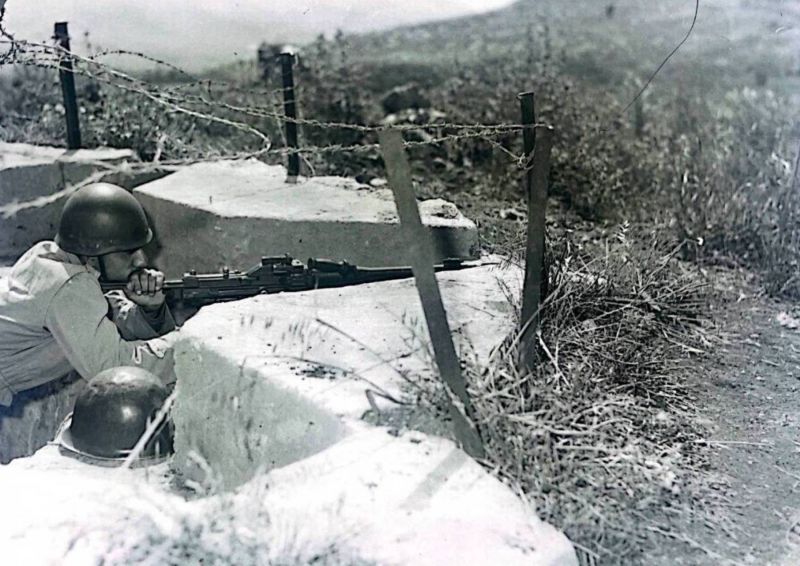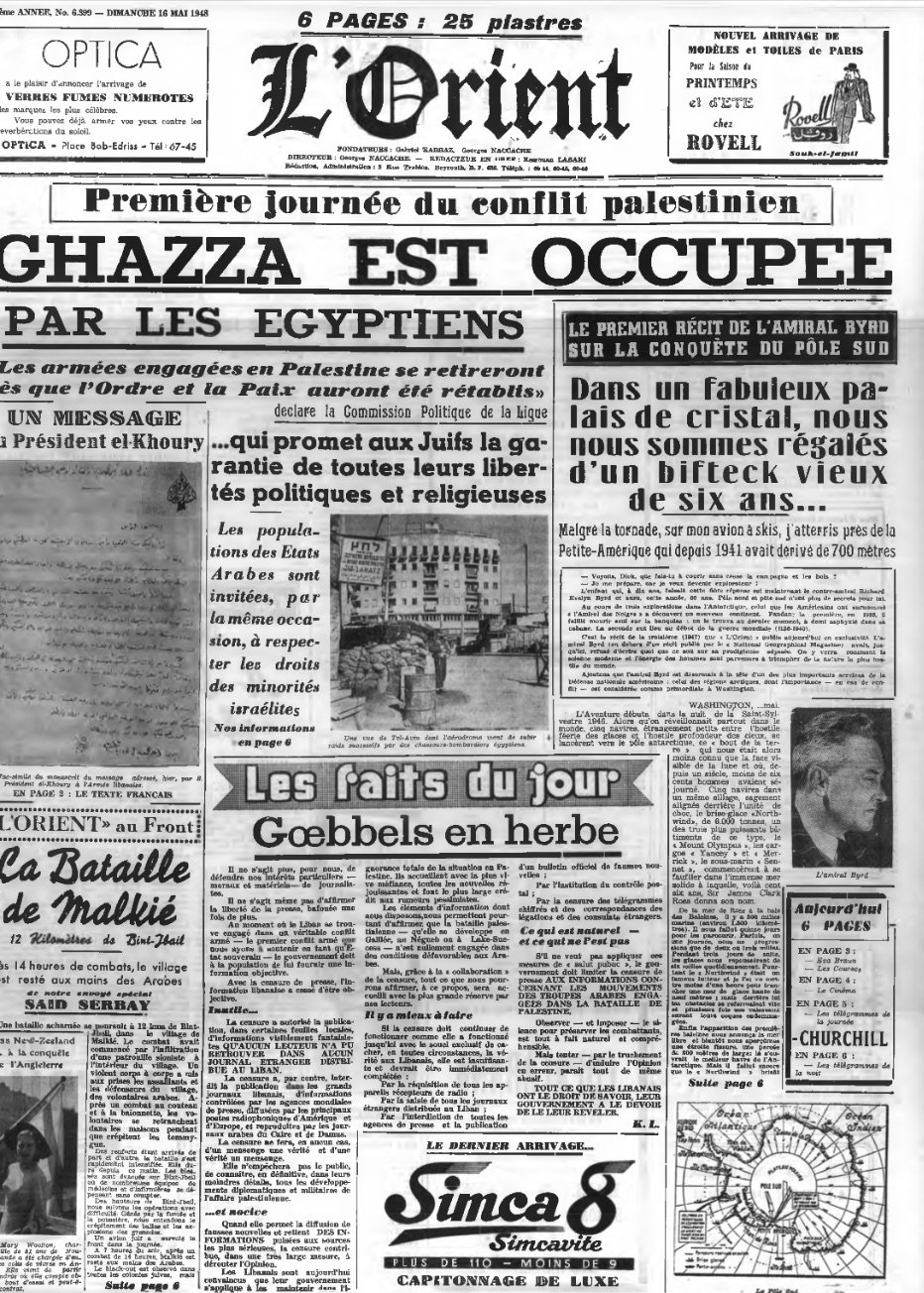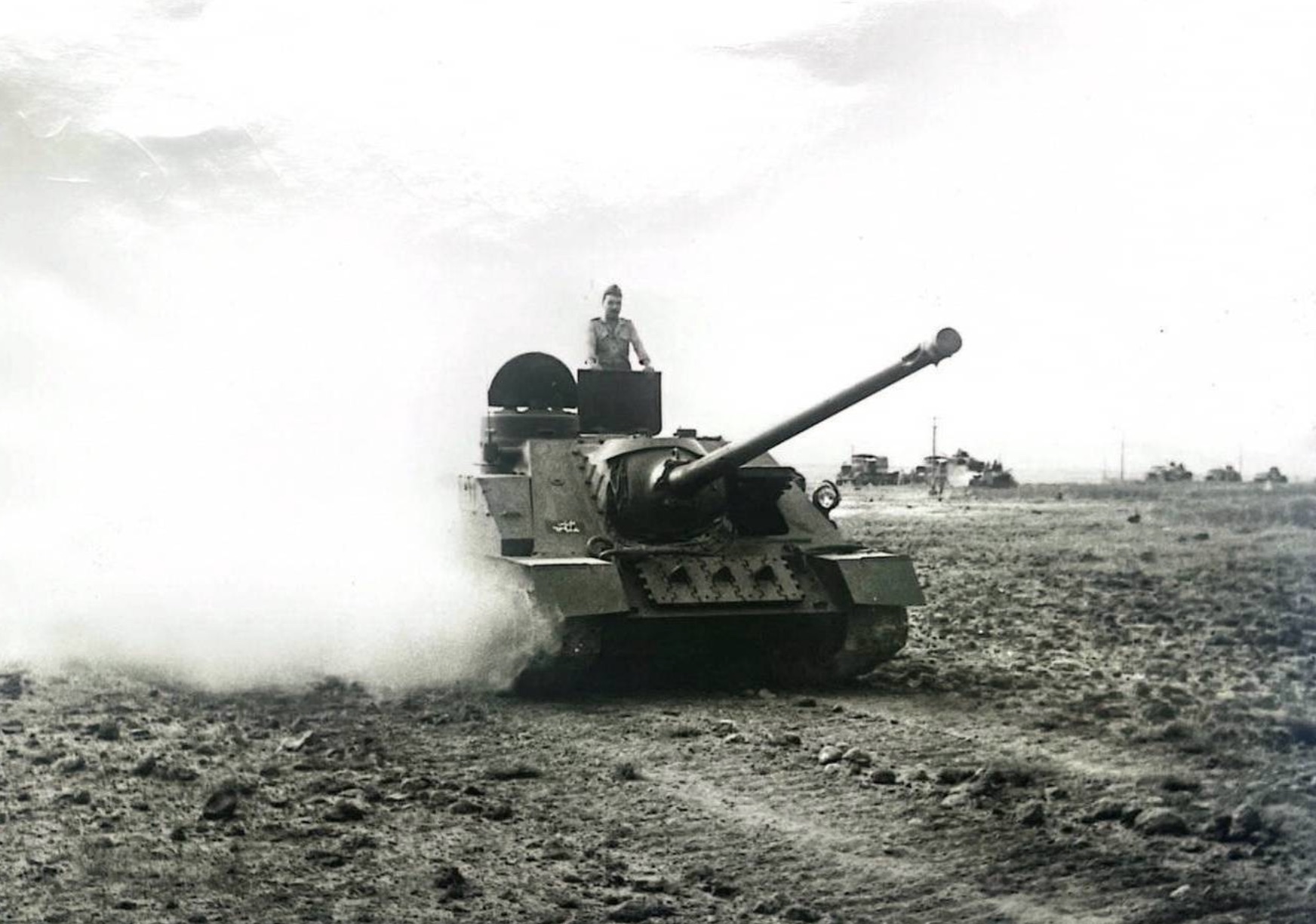
Unidentified soldiers stationed on the Lebanese-Israeli border, June 6, 1967. (Credit: L'Orient-Le Jour archives)
Lebanon has shifted its stance on the 1949 Armistice Agreement.
In recent days, amid diplomatic efforts to quell clashes in southern Lebanon between Hezbollah and Israel, Beirut is now advocating for a return to the agreement with Tel Aviv.
“All international decisions must be applied, first and foremost the 1949 Armistice Agreement," said Caretaker Prime Minister Najib Mikati.
This comes at a time when Western embassies are urging strict adherence to UN Security Council Resolution 1701, which outlines the withdrawal of Hezbollah fighters north of the Litani River in exchange for Israel respecting Lebanese sovereignty.
The goal is to prevent escalation and foster long-term stability in southern Lebanon.
Despite this, Beirut deliberately chooses to invoke the 1949 Armistice Agreement.
 (Credit: L'Orient-Le Jour archives)
(Credit: L'Orient-Le Jour archives)
Israel suspended the application of the armistice in the wake of the regional conflict in June 1967, even though its border with Lebanon was witnessing unprecedented calm.
Sealed on 23 March 1949 at Ras Naqoura, the armistice agreement was one of a series of agreements signed in 1949 between Tel Aviv and its Arab neighbors to put an end to the first Arab-Israeli war, which broke out in May 1948 following the proclamation of the State of Israel by Zionist militias in Palestine.
At the time, Lebanon joined the fight alongside Syria, Jordan and Egypt, at the instigation of then-President Bechara al-Khoury, who was seeking Muslim support in his bid to renew his mandate.
"You are called upon to save Palestine, this Holy Land dear to the heart of each one of you... it is no longer possible to avoid a fight,” Khoury wrote in a letter to the soldiers.
A buffer zone in 1949
Lebanon's involvement in the war was largely symbolic, as the Lebanese Army did not engage in any major battles. Just five years after gaining independence, the Army was still in its early stages, comprising only 3,000 men, who also had the responsibility of maintaining internal cohesion within the country, according to historian Stéphane Malsagne.
Fearing a potential collapse of the military institution, Army Chief Fouad Chehab was reluctant to launch offensive operations against the Israelis. Instead, he focused on repelling Zionist militiamen attempting operations in Lebanon to prevent the influx of volunteer fighters.
When the armistice was signed, Israeli Colonel Mordechai Makleff, who represented Israel in the agreement, was quoted in the New York Times on March 24, 1949: "Israel has never had any quarrels with Lebanon in the past and has no reason to have any in the future."
But what exactly did the agreement provide for? Is Lebanon, particularly Hezbollah, genuinely prepared to (re)implement it?
Article I of the armistice urges both countries to scrupulously respect the Security Council's prohibition on the use of military force in settling the Palestinian question while emphasizing the right of each of the parties to be assured of its security.
Article III specifies that each signatory must ensure that no "irregular force may carry out acts of war or hostility" against the other.
An essential aspect is that the agreement dictates that the "demarcation line [behind which the respective armies of each country must withdraw] shall follow the international border between Lebanon and Palestine." This refers to the route negotiated between Paris and London in 1923, known as the Paulet-Newcombe agreement.
The agreement entails a limited military presence in the border area for both countries. On the Israeli side, this involves the area north of the seaside resort of Nahariya, approximately 10 kilometers from the border. In Lebanon, the demilitarized region begins at Qasmiyeh (where the Litani River flows) and extends south to the border and east to Hasbaya.
Interestingly, this aligns closely with the exclusion zone outlined in Resolution 1701 (July 2006) south of the Litani River. Notably, the agreement, much like those signed with other Arab countries, lacks a mechanism for revocation and states that any changes must be mutually decided by the involved countries.
‘Cows go astray’
To ensure the implementation of the agreement, a Joint Armistice Commission (JAC) was established, consisting of three Lebanese officers, three Israeli officers, and one UN officer tasked with arbitrating disputes.
According to Israeli historian Oren Barak, who wrote an article published in the journal Israeli Studies, the JAC convened multiple times between 1949 and 1967. Incidents along the border were generally resolved without major issues. Barak notes that Lebanese officers had significant autonomy in their decisions, particularly because Lebanon's political and economic elite were not deeply invested in the Southern region.
“They even told each other that Lebanon would be the second country to sign a peace agreement with Israel, once the taboo had been broken,” he said.
Israeli leaders acknowledge that the armistice agreement with Lebanon has fostered lasting peace along the border. Former Israeli Prime Minister Golda Meir, during a meeting with US President John F. Kennedy in 1963, was quoted as saying, "We have never had any problems with Lebanon... Sometimes cows get lost and end up in Israel, but there have been no serious incidents."
This perspective on the March 1949 agreement is described by historian Sean Foley as "a model armistice."
But this period of stability did not last long. On 5 June 1967, following the gradual rise in tensions in the region between Israel and its neighbors, the Israeli Army launched a "pre-emptive" offensive in which it destroyed the air forces of Egypt, Jordan and Syria.
 An unidentified tank on the Lebanese-Israeli border, June 6, 1967. (Credit: L'Orient-Le Jour archives)
An unidentified tank on the Lebanese-Israeli border, June 6, 1967. (Credit: L'Orient-Le Jour archives)
Israel took advantage of this to invade, in just six days, the Egyptian Sinai, the West Bank, the Gaza Strip, East Jerusalem and the Syrian Golan Heights (including the Shebaa Farms, which Beirut would later claim). The Lebanese leadership stepped up its bellicose statements, with then Prime Minister Rachid Karameh even declaring that his country "was ready for the decisive battle after the Israeli aggression.”
But the Lebanese Army was opposed to any intervention. "The troop commander, Emile Boustani, saw any involvement by Lebanon as suicidal,” writes Sean Foley.
However, to secure and maintain the territories it had occupied, Israel withdrew from all the armistice agreements it had previously signed, including the one with Lebanon. This decision was made even at the cost of sacrificing what was considered its calmest border.
This article was originally published in French in L'Orient-Le Jour. Translation by Sahar Ghoussoub.
References:
- Galilee Divided : The Israel-Lebanon frontier 1916 ; 1984, de Friedrich Hof
- It would surely be the second: Lebanon, Israel and the arab-israeli war of 1967 , par Sean Foley
- L'armée libanaise dans la guerre de Palestine (1948-1949) : vers un renouveau historiographique, de Stéphane Malsagne